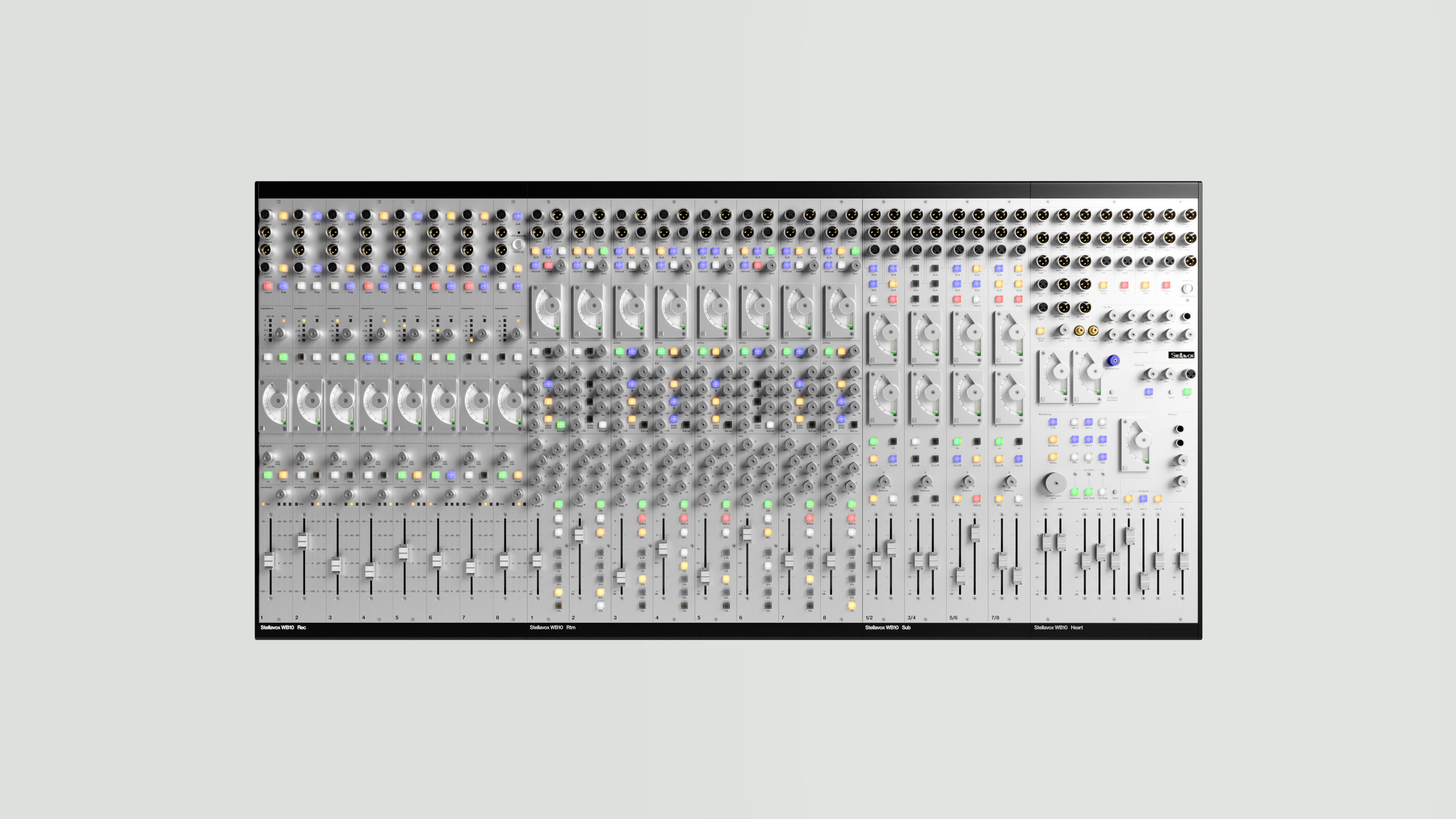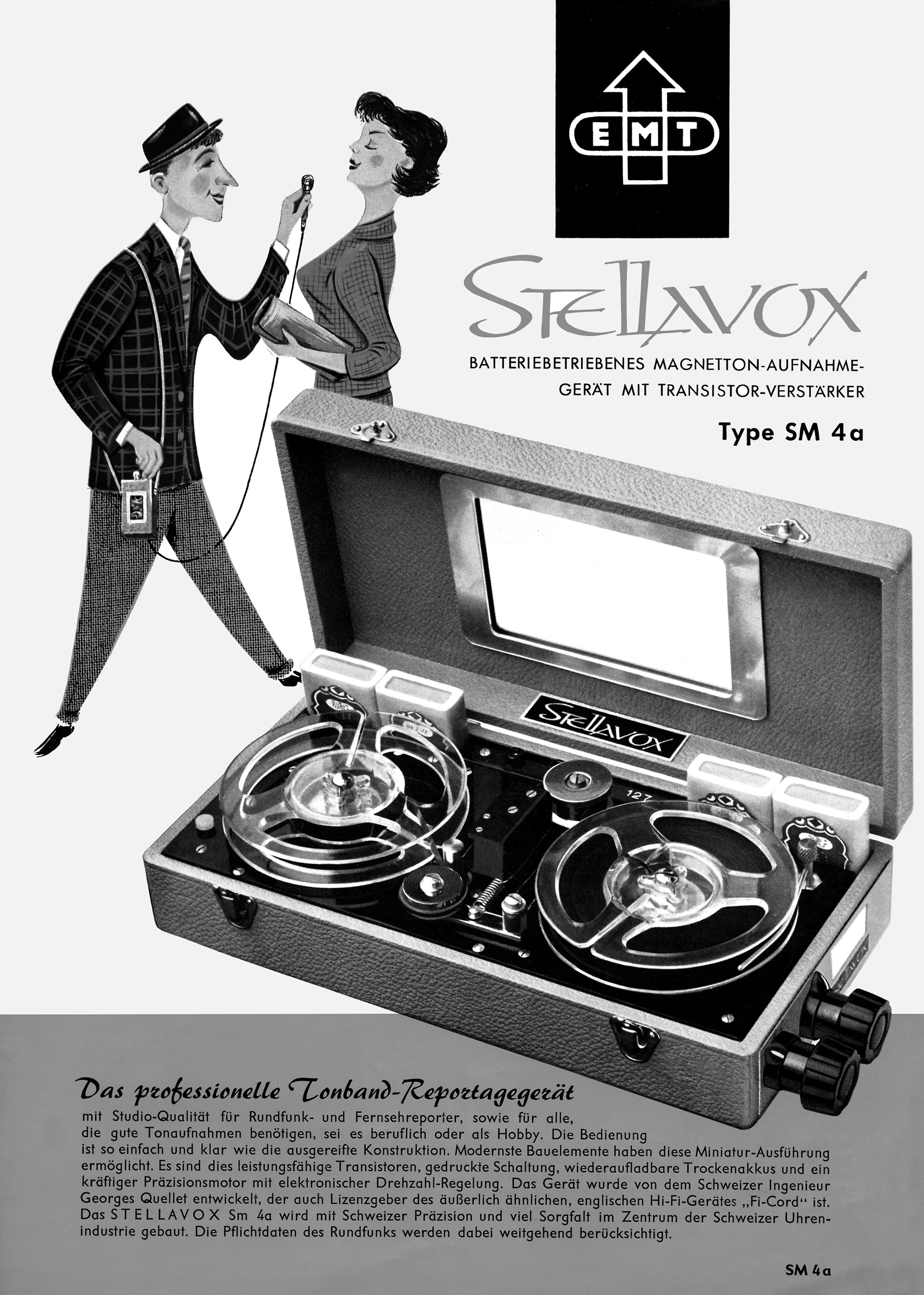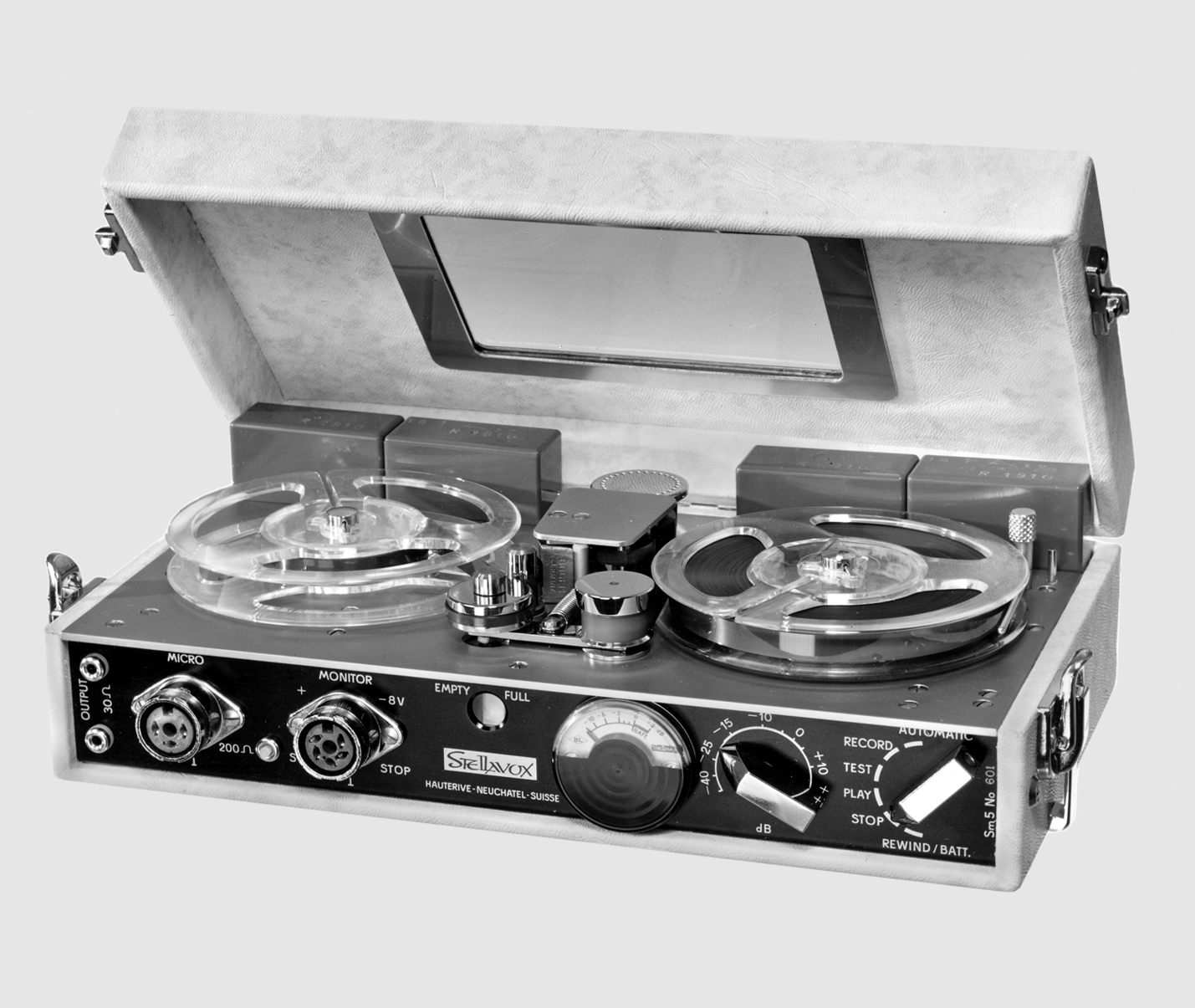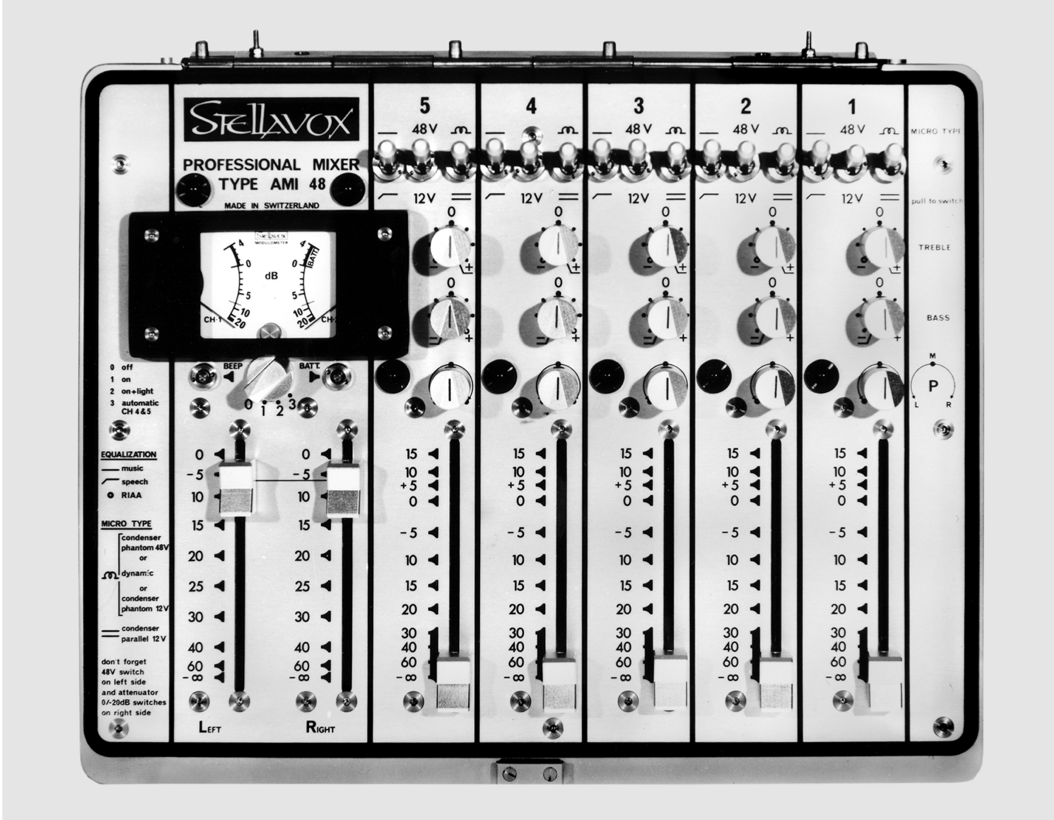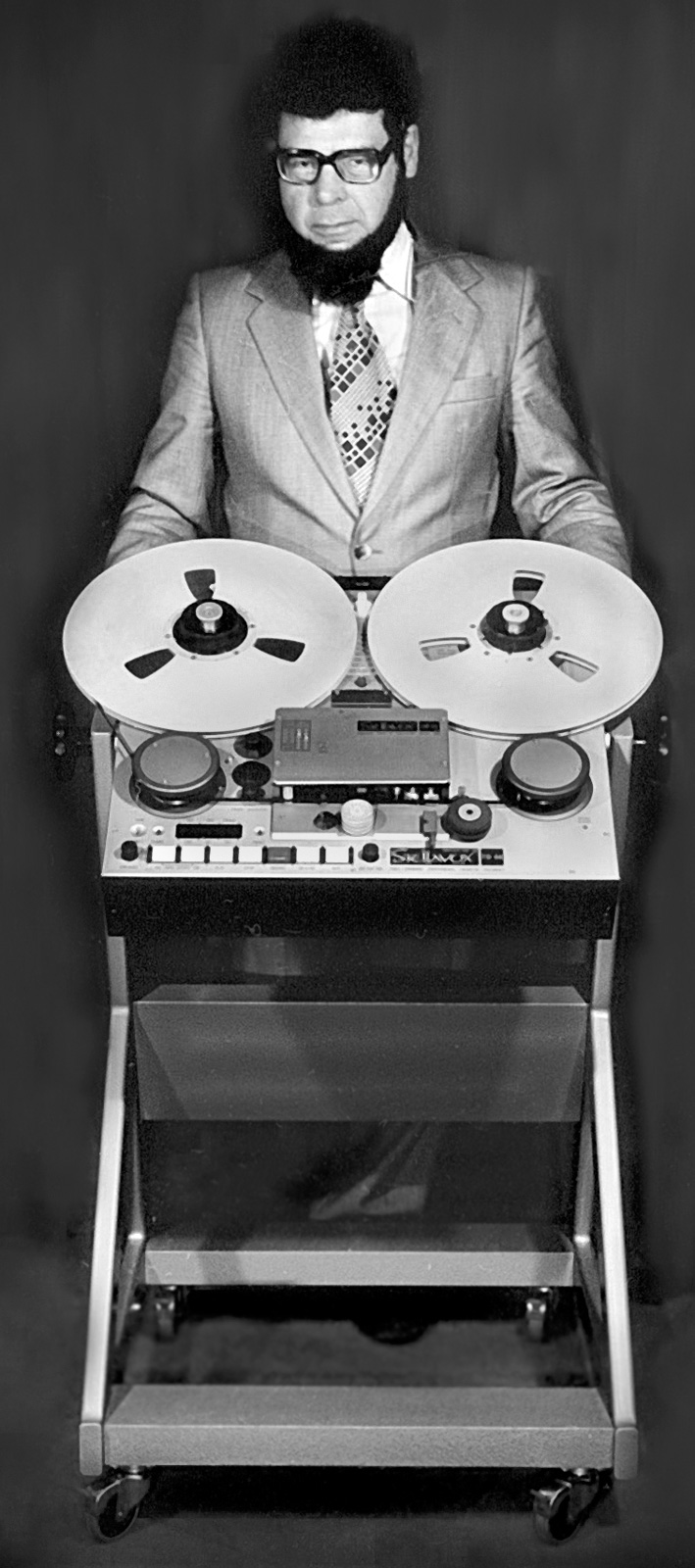Swiss made
Since 1953
Stellavox
The motivation behind every stage of our research, development and production process comes from the wish to create exclusive products with exceptional sound quality and longevity, which ignite passion in the user, and reflect the true spirit of Stellavox while embracing the technologies of today.
Products
Products
Seventy years of history
IDEM
Stellavox
Throughout its long history, Stellavox has never manufactured products for the HiFi market – but there has been no shortage of ideas. 1946, a schoolboy of the age of 17, Georges Quellet, the later founder of STELLAVOX, sketched a small portable, optical disc recorder in his notebook. The basic principle anticipated the idea of the CD player, many years before it’s birth. A ‘hi-fi idea’ that the young Georges understandably couldn't realize.
Years later, in 1980, Quellet built a prototype turntable with a motor he developed for the legendary TD9 tape machine. But this project also failed to make it to market.
That wouldn't be much different today if Micha Huber, the founder and owner of THALES tonearms and turntables, hadn't stopped by our place in 2020. A phono preamplifier prototype built many years ago for my home music listening, impressed Micha so much in terms of sound quality that we decided to develop the electronic for Micha’s phono preamp project.
The exciting development work on the THALES Magnifier and the sensation and success it achieved on the market encouraged us to create further high-end products alongside our work on studio mixing desks, thanks in part to a new power amplifier principle that was ready for series production after 25 years of development.
Products for High-End music listening and monitoring
The Stellavox IDEM monoblock amplifier is the first product for music reproduction built after many years of development.
The ‘idem’ is an intrinsic, completely NFB-free audio amplifier. It has a fully balanced design and operates according to a principle that is unknown in the audio sector.
The Intrinsic Zero-NFB Amplifier
An introduction to the STELLAVOX IDEM Amplifier
THE IDEAL AMPLIFIER
Let’s start with a utopic ideal. What is interesting here is the extraction of a few parameters that determine everything. There are three of them. So:
We often read that the ideal amplifier is a superconductor, or more simply, a copper wire that amplifies current and voltage.
However, we need to go further to find a physical definition that specifically describes the ideal parameters.
Sound is defined by the ratio of ‘change in amplitude’ to ‘change in time’. All parameters, such as phase shift, distortion, noise, etc., are represented in this simple equation.
Sound = ∆ amplitude / ∆ time
Thus, only two factors, amplitude and time, define sound, a signal or, in general, an acoustic event.
The following equation describes the error, i.e. the deviation from the ideal of any type of audio device:
∆ A in / ∆ t in = ( ∆ A out / ∆ t out ) . E
Where E defines the error of the device. In an ideal amplifier will have: E=1.
Another aspect is the fact that a power amplifier is supposed to drive a loudspeaker. We will understand later that for ideal drive, the output impedance should be zero. In other words, it represents a short circuit.
We can therefore summarize the characteristics of an ideal amplifier as follows:
- No time distortion
- No amplitude distortion
- Infinitely small output impedance (short circuit)
For the sake of completeness, the efficiency of the ideal amplifier must also be mentioned. It delivers the total energy to the loudspeakers, so it is 100% efficient. The impossibility of which is understood by anyone who does not believe in the ‘perpetuum mobile’.
In this article we only want to consider the ideal of sound reproduction.
TIME DISTORTION/TRANSIENT INTERMODULATION DISTORTION TIM
There is no general term for the physically correct definition ‘distortion of time’. Terms such as TRANSIENT INTERMODULATION (distortion), TIM for short, or SLEW INDUCTION DISTORTION (SID) refer specifically and equally to the problem of the negative feedback control loop (NFB for short) in almost all amplifiers.
I will retain the term TIM, as it describes the main cause and effect of time distortion, in this case in relation to the problem of a power amplifier (‘time distortion’ remains an umbrella term).
This brings us to the topic at hand: the main cause of TIM is inadequacies in the NFB control loop! TIM suppresses the transmission of transients. But let’s take two steps back:
Music changes very quickly and constantly.
The waveform of music is always and constantly a sum of sine waves and transients.
It is not the case, as is often heard, that transients ‘sometimes’ occur in music.
We can roughly imagine transients as needles of various sizes and widths, slightly inclined and scattered irregularly across the envelope of all sine waves, including overtones. We must be aware that not a microsecond passes without a needle jumping by.
Before music existed – which was not long ago – humans heard almost exclusively transients. The rustling of leaves, the cracking of wood, coughing, animal cries, rumbling stones, speech. This ‘noise’ had emotional content: joy (the cackling of a wild chicken), fear (the trampling of a bear in the forest), in short, hearing as a factor of survival and therefor emotion.
It is precisely this association in our DNA that is the cornerstone of a modern invention we call music. It is civilized noise, that creates emotion.
And to put it briefly: reproduced music with depressed transients conveys abstract emotions at best, sounds boring and flat, you don’t feel like you are part of the action, it lacks colour and depth, spatiality and directness, and, of course, emotionality.
So how does the elimination of transients by NFB and the resulting TIM effect work?
The constant change in music is easiest to imagine as ‘music off – music on’.
Let’s imagine that ‘music off’ is at the input of an NFB amplifier, so there is no signal at the output. If we now think ‘music on’, we must do it in slow motion! The signal creeps into the ‘input area’. We linger here for a moment. There is still no signal at the output. The amplifier reacts in open-loop mode, as there is still no phase-shifted, attenuating signal at the input from the output. It therefore amplifies with an ‘untamed’ slew rate and, before the output signal finally reaches the input, it went already into clipping, or at least have moved away from the original input signal.
This process will be repeated many times, as the returned signal is not a ‘clean’, phase-shifted music signal, but has a distorted character, and it takes many zero crossings until the system is ‘cleaned’ and is again able to read the music signal analogously.
Though luck, when the next ‘needle’ is right outside the door at that very moment and the game starts all over again. In these almost chaotic moments, the amplifier can only transmit reduced information, and short peaks are lost. The mentioned ‘needles’ are ‘swallowed’ because of Transient Modulation Distortion.
AMPLITUDE DISTORTION
Linear distortion
Simply put, linear distortion is a ‘bending’ of the frequency response, similar to the effect of an equalizer. Measured with a sweep, i.e. a sine wave with a slowly increasing frequency, the frequency response is usually perfectly straight. Otherwise, the amplifier is damaged. This is therefore a measurement exercise that only describes the frequency corner points but does not allow any conclusions to be drawn about the dynamic behavior.
Linear distortion in a power amplifier occurs almost exclusively in a dynamic context, for example in interaction with the loudspeakers, usually due to excessive output impedance (inflated bass) and NFB, due to phase shift in the high frequency range, often only short-term cancellations or amplifying oscillations.
Non-linear distortion
A complete description of amplifier-generated non-linear distortions and their psychoacoustic interpretation would go beyond the scope of this article. The topic has been documented extensively, in contrast to the TIM problem mostly ignored.
However, it is important to know that distortion has a qualitative and only a minor quantitative influence on the realism of music listening. Put simply, it depends on the ‘type’ of distortion.
The THD+N parameter must always be interpreted, as it lumps together all waves that do not occur in the original.
Intermodulation distortion will interfere with the overall signal even in small quantities due to its unmusical character. The same applies to higher-order harmonic distortion, although usually to a lesser extent. Low orders such as 2nd and 3rd are (at least for the author) undesirable but are only perceived as unpleasant at levels of 0.5% to 1%.
So which amplifier is preferable? The one with 1% THD or the other with 0.01% THD? Without knowing the type of distortion components, there is no answer to this question and the parameter THD remains abstract.
OUTPUT IMPEDANCE/GENERATOR INTERNAL RESISTANCE
This critical parameter, often underestimated, has a significant influence on the transient response, frequency response and damping characteristics of the connected loudspeakers.
Only when the loudspeaker is short-circuited by the amplifier can the latter correctly control the loudspeaker via the electrodynamic damping (of the speaker’s coil magnet system), drive it with precise timing and brake it accurately.
Let’s imagine that the amplifier guides the loudspeaker with an arm. In the case of an amplifier with a short circuit at the output, we can imagine this arm as being made of iron. The loudspeaker is firmly connected to the amplifier and is moved precisely and in a timely manner.
With a high output impedance, on the other hand, we think of the arm as a spring, because there is a resistance between the amplifier and the loudspeaker and its voltage drop, which changes with the current, ‘behaves’ identical to a spring. If uncontrolled, the loudspeaker will overshoot (harmonic distortion), lag behind (time distortion) and perform somersaults, like a dog off the leash.
The primary mechanism for most amplifiers is the use of NFB to minimize output impedance, since the intrinsic output impedance of a standard AB amplifier is typically 1Ω to 3Ω.
But now pay attention!
The ‘virtual’ low impedance created by a NFB loop is neither constant nor real and is by no means synchronous with the music signal at the input. It will have a similar effect to the ‘spring arm’ in the example above.
In short, it works like this: Think of a drumbeat. Following the ‘drum signal’, the loudspeaker draws current from the amplifier, a voltage drop occurs at the generator’s internal resistance (output impedance), the loudspeaker sees less voltage and experiences a current drop, the control loop at the loudspeaker output also detects the voltage drop, so it sends a smaller inverted signal to the amplifier input, thereby increasing the gain, which in turn compensates for the voltage drop at its internal resistance, always with the residual error of its control gain.
All this takes time. Less than it took you to understand the process, but still long enough to paralyze the drumbeat.
I hear the critical voices saying, ‘It happens so quickly that you can’t hear it!’
But beware, it is even more drastic:
We also must take into account the electromechanical complexity of the loudspeaker, which is galvanically connected to the negative feedback terminal.
The electromechanical charging and discharging (mechanical mass and spring energy storage and electrical capacitive and inductive energy storage) do not behave like an ohmic resistor at all, but will discharge energy more or less during the attack or decay of the drumbeat or at any other point in the event, in which case they increase the voltage in the control circuit and act as an increase in internal resistance, causing exactly the opposite of what should be done.
When charging, the opposite is true.
The electromechanical ‘batteries’ interacting with NFB slow down the response of the system and create time distortion.
And you’re not supposed to hear that?
This creates constant unrest, blurs the contours, cannot slow down, always sounds like it is lingering and does not respond to attacks.
Since a loudspeaker cannot be as fast as light due to its mass, it will always move behind time. The point is, however, that this temporal inaccuracy is amplified by the control loop instead of being corrected.
Low output impedance created by NFB: a sailor’s promise.
This discussion becomes even more interesting when you add this insight to the considerations of TIM mentioned above. The complexity of the loudspeaker and the consequences of an unstable control loop increase the TIM effect in the voltage amplifier and prolong the critical periods of transient intermodulation. At the input of the amplifier, fresh music is mixed continuously with stale music.
DESIGNING AN INTRINSIC AMPLIFIER WITHOUT NFB
If you decide to develop an amplifier without any NFB, either local or global, to circumnavigate all the NFB problems, you will inevitably encounter a number of issues.
Since this approach departs from the textbook – this principle is not provided for there – you embark on a long and rocky, mostly lonely development path. It is not possible without persistence.
Perhaps this is also the reason why, in all cases (at least those I am aware of), attempts and product development have been undertaken by lone individuals or small companies. Microbiotopes that have made it possible to realize a dream, an inner desire for sound, or to set out on this path.
THE STELLAVOX IDEM MONO AMPLIFIER
The development of this new amplifier principle took 25 years, naturally with interruptions and as a side project (there was a lot of other work to do, like helping my daughter to grow up).
During this time, countless prototypes were created. Some of them were built solely to better understand basic principles (to see how this sounds with music) or to tinker with detailed ideas.
In 2022, the time had come. All problems had been solved. THD with the lowest values, mostly 3rd order, TIM (at least for our laboratory) not measurable and an output impedance of 0.02Ω (which we later improved by a factor of 4).
For the first listening test, we only had a mono amplifier prototype, which we called the ‘hotplate’ (not because it got hot, but because of its appearance). After listening for only 10 seconds, we realized: we had reached our goal. That sounds like a gross exaggeration. But for me and Carmine DeLuca, my colleague and driving force in recent years, it was an almost mystical moment that we will never forget, that repaid years of sweat and tears.
In the days that followed, we listened to all the musical delicacies that we couldn’t help but enjoy on the ‘hotplate’, in mono, mind you.
We did some further measurement as well, but who cared anymore about them after having heard the hotplate!
In the months that followed, we built the prototype called ‘Toaster’, now in stereo and with an improved thermal control circuitry and improved output impedance, and then we started engineering a new product, the STELLAVOX ‘idem’ monoblock.
The ‘idem’ is an intrinsic, completely NBF-free audio amplifier. It has a fully balanced design and operates according to a principle that is unknown in the audio sector.
It’s tiring to say that only the best components, from the transformer to the speaker terminals (‘home-made’), are used. I assume that all devices in this price range are built in this spirit.
Its efficiency when playing is equivalent to that of a standard AB amplifier. Its quiescent current is higher, so it will absorb slightly more energy during a pause in the music. This is where the standby mode comes in, which reduces this to a few milliamps while all capacities remain charged and the ‘low’ Class A current in the voltage amplifier continues to flow, so that it is immediately ready to play after ‘operation on’.
Voltage amplifier
We designed the voltage amplifier to the best of our knowledge based on 30 years of experience and Innovation with zero NFB circuits.
It is symmetrical and in Class A, meaning that a constant current flows through it. Amplification takes place in a single stage via a cascade circuit, with the cascade transistor bases galvanically connected to ground (very fast and broadband).
Despite the absence of NFB, this results in astonishingly low distortion values, primarily on the third and to a lesser extent on the fifth harmonic, with a negligible proportion of higher harmonics.
This is however not surprising, since the higher harmonics do not originate intrinsically from a carefully constructed voltage amplifier, but in most cases result from the distorted phase of the control loop (NFB) at higher frequencies.
The intermodulation distortions are in the order of -90dB (with Flexus from NEUTRIK), which was to be expected in a symmetrical constant current amplifier of this type.
TIM, primarily due to the lack of NFB and a high bandwidth, cannot be identified with various measurement approaches.
Output stage with separate signal and current processing
The output stage of the ‘idem’ consists of two functionally separate units: a signal transmission stage and a downstream current output stage.
Signal transmission is carried out via two bipolar single-ended circuits in Class A.
As expected, harmonic distortion is extremely low (0.01% 3rd harmonic), with IMD and TIM values approaching zero.
This is also to be expected, as the single-ended stages are simple emitter followers (with constant current sources, etc., of course), see a constant current flow, and only function as signal generators at the speaker drive, i.e. they do not have to deliver any power, which is taken over by the second current stage to 99.9%.
The current stage exclusively supplies current to the speakers.
A dynamic current lead, which always sets the current at a Kirchhoff summation node, where the voltage and current meet, higher than the energy currently required by the loudspeakers, is largely responsible for the constant output impedance between 0.002Ω (music listening level) and 0.012Ω (full power).
ADDENDUM
Technical data measured with constant sine waves has only minimal significance in terms of the quality of music listening.
Sine waves are static and ideally free of transients, whereas music is a continuous change with all kinds of transients. We are talking about two different worlds and only measuring one of them, the wrong one in this case.
Have you ever wondered why a number of amplifiers that you know very well and whose individual sound characteristics you are familiar with (some of which are barely usable, while others are truly outstanding) hardly differ in the measurement data published by the manufacturer? Have you ever asked yourself why this is the case? Could it be that we are doing something wrong here?
My main concern is to raise awareness of the time issue in audio recording and playback.
Our human hearing perceives amplitudes logarithmically and time linearly.
We hear amplitudes imprecisely, but we “understand” with astonishing accuracy where their zero crossings are in time.
This natural wonder, as psychoacoustic teaches, has given us orientation, speech recognition, noise identification, etc., all of which are related to time.
Without these phenomena, there would be no music – and maybe no human beings.
This awareness must be the basis for the evaluation and development of musical and lifelike-sounding devices, because good music and improved music listening are part of the quality of life, of our culture.
Stephan Schertler, Mendrisio 28. August 2025

